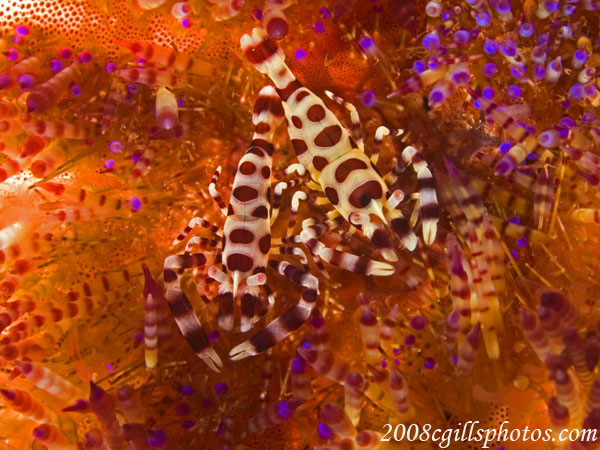
 |
|---|
|
Image © Cindy Abgarian COLEMAN SHRIMP HITCHING A RIDE ON A FIRE URCHIN It always helps to know, when in search of a particular subject, something about their habitat. Knowing what they eat or something about their relationship with other marine life will often aid the diver in their quest for locating and subsequently photographing a subject. Want to find Coleman Shrimp? Look for a Fire Urchin/Asthenosoma Varium. These two share what is referred to as a commensal relationship - one in which one partner may live in close association, and receive benefits, while providing neither benefit nor harm to the host. The Coleman shrimp tags a ride, sitting perched among the toxic spines of the urchin, without doing harm, but generally will clear an area of any obstructions where it chooses to perch. Many times found in pairs, the female of the species will be the larger of the two. Coleman Shrimp are generally easy to photograph (although they are quite tiny), as they feel quite comfortable sitting on their poisonous perch, so they have less tendency to flit about as other shrimp often do. Divers just need to take care when viewing and photographing them, as the venom-filled spines of the urchin are reported to cause severe burning discomfort with contact. We were very fortunate that the harbor in Ambon had prolific numbers of Fire Urchins. Many had Coleman Shrimp aboard, while others had Zebra Crabs, but I never found the two varieties of crustaceans sharing one urchin.
|
|---|